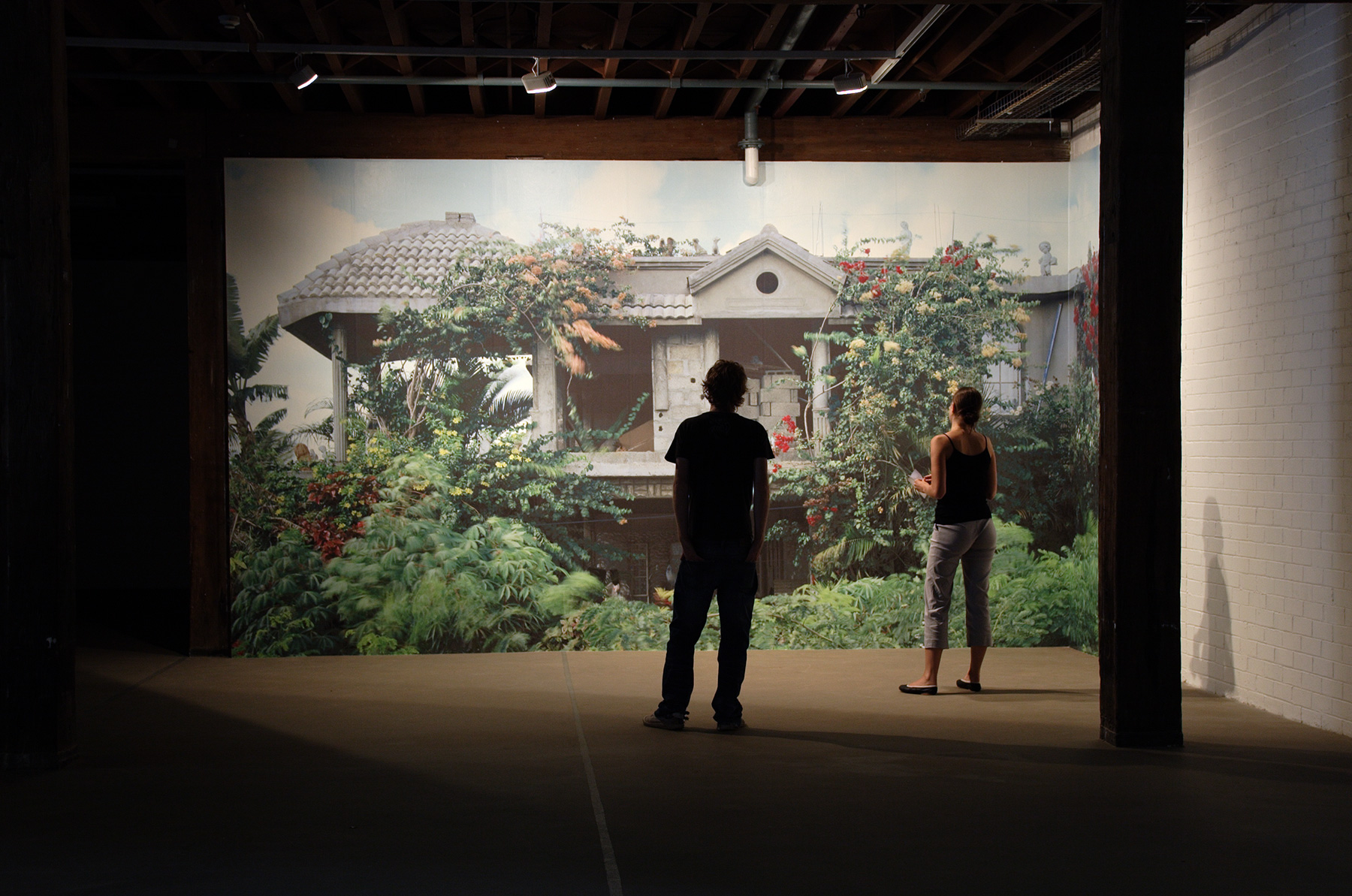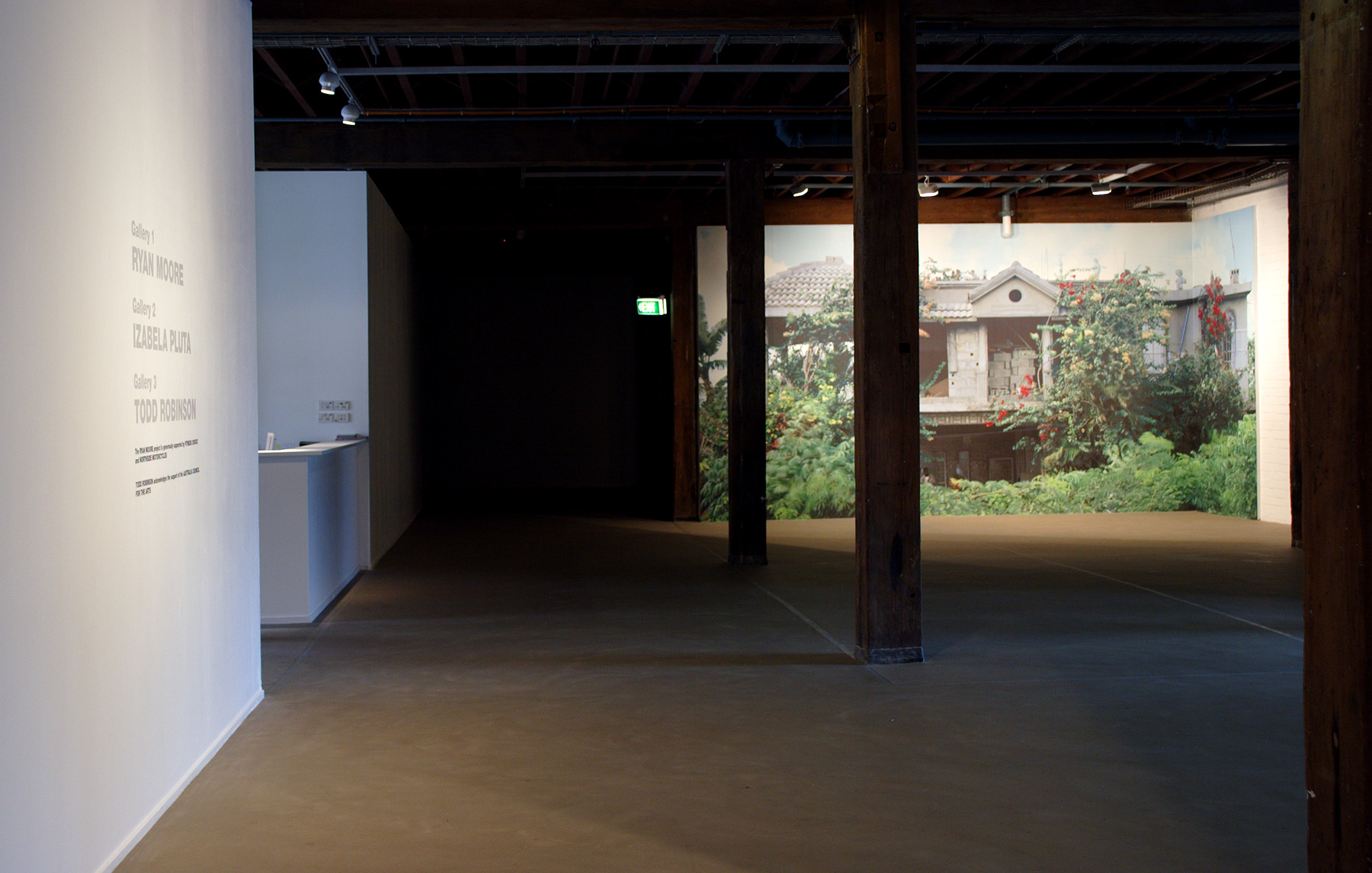Making mirrors
Artspace, Sydney
9 March - 1 April 2006
The walls of our homes often bare the traces of what goes on within them, but our human resourcefulness has developed many innovative ways to conceal or remove both the physical and psychic scuff marks of family life. The harmony signified by family photographs hung on walls and the spatially transformative function of wallpaper are but two of these devices. Izabela Pluta’s use of wallpaper, and its rich metaphorical significance, as an expressive medium sits comfortably alongside, and at times intersects with, her interest in the photographic image (and object). This intersection is demonstrated in Making Mirrors, but what is initially striking about this work is its “specific mode of address”.[1] Considered as an artistic medium, Pluta’s photomural operates on the complex of relationships between its spatial dimensions: the literal space that the work occupies; the generic domestic space to which the material support refers; the illusory space of the image and the actual space depicted in the image. The delicate point of convergence of all of these spaces however is the surface. Delicate because it is at once both a positive and negative space, that never commits enough to either to let the beholder settle in just one spatial dimension. This is a crucial aspect not just in Making Mirrors, but in the way Pluta conceives of space and image in her wider practice, as also containing their inverse state: a space might be an object, an image might not be anything but a reflection of the observer. - Ashley Whamond
excerpt from ‘Making Mirrors and Breaking Walls’, ARTSPACE PROJECTS 2006, Ashley Whamond, p13
[1] Rosalind Krauss, “A Voyage on the North Sea”: Art in the Age of the Post-Medium Condition, London, 2000, 29. Krauss uses this terminology in her discussion of the challenges faced by modernist painting in the early 1960s, set out by a new “phenomenological vector” that connected “viewer and object”, referring to the new currency of the beholder in reformulations of concepts of the “medium”. My reason for calling up Krauss in this context is to evoke her concept of the “internal plurality of [a] medium” as a lens through which to look at Pluta’s practice in terms of “medium specificity” as hers like many contemporary artists would on the surface appear to operate in the context of what Krauss calls “the post-medium condition”.



